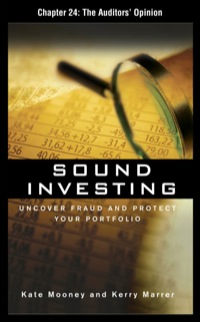Question 1 Hiram Finnegan Int. (HFI) is a high-tech company in designing computer software. Due to high market demand for its products, the company is going to expand its business by considering three projects. The three projects all have the same maturity of three years. The first project is called "Alpha" that needs an initial investment of 20 million. Alpha is able to generate a cash flow of 70 million at the end of the first year, the second cash flow of 10 million at the end of the second year, and the last cash flow of 10 million at the of the third year. The second project is called "Beta" that needs an initial investment of 10 million. Beta is forecasted to have a cash flow of 15 million at the end of the first year, the second cash flow of 40 million at the end of the second year, and the final cash flow of 10 million at the end of the third year. The third project is called "Gamma" that needs an initial investment of 10 million now and a further investment of 5 million at the end of the first year. Gamma will have a cash flow of 60 million at the end of the second year and the final cash flow of 10 million at the end of the third year. Assume the annual discount rate is 12%. (i) Calculate net present values (NPV) and the profitability index (PI) for Alpha, Beta and Gamma. Assume that the three projects are independent of each other, which project(s) should be accepted in terms of NPV and PI (10 marks)? (ii) Calculate payback periods for Alpha and Beta. Consider Alpha and Beta. If these two projects are mutually exclusive -i.e. HFI can only accept either Alpha or Beta, should you use NPV or payback method to evaluate the two projects and what are the differences between the two methods? (8 marks) (iii) Assume that HFI only has a 20 million budget, which project(s) should HFI invest in? Please justify your answer. (7 marks) Question 2 Bradford plc. is financed through bonds and ordinary shares. The bonds were issued five years ago at a par value of 100 with a total funds raised 30 million. These bonds carry an annual coupon payment of 10, and are due to be redeemed in four years. Investors currently require a yield of 6% on the bonds. The firm also has 3,000,000 ordinary shares outstanding at the current price of 45.54. Bradford plc. is now reviewing its capital budget for the next year. It has paid a 1 dividend per share over the past several years, and its shareholders expect the dividend to remain constant over the next several years. The company forecasts that it will require 13 million to fund all its profitable projects and its net income will be 12m for the next year i) What is the current capital structure of Bradford plc.? (10 marks) ii) If the firm follows the residual dividend model and maintains its current capital structure, what will be the company's dividend per share and payout ratio for the next year? (8 marks) iii) Suppose the firm's management decides to continue to pay the 1 per share and maintain its target capital structure and capital budget. What is the minimum amount of new common stock that the company would have to issue to meet each of its objectives? (7 marks) Question 3 John plc has 10 million shares outstanding and the current share price is 4. These ordinary shares have a beta of 1.5. The risk-free rate on government bonds is 5% per year and the expected rate of return on the market portfolio is 15% per year. i) Use the CAPM model to calculate the firm's cost of equity (5 marks) ii) Assuming the corporation tax rate is 30%, what is the weighted average of cost of capital (WACC) if the market value of its debt is 10m with costs of 10% per year before allowing for tax shield benefits? (10 marks) iii) What is the drawback of using CAPM to estimate cost of capital? (5 marks) Question 4 Consider the following two hypothetical statements from corporate managers. Based on your knowledge of market efficiency, which statement will you agree with? Please justify your answers with theories and empirical evidence. The word count limit for answering this question is 800 words. (14 marks) a. Shareholders will never know our capital budgeting decisions b. Shareholders will punish the company when we have made bad capital budgeting decisions. Section B Answer Two of Three Questions Question 5 Can you specify why keeping a certain amount of cash is necessary for firms? Do you think that shareholders will be happy if a firm holds a larger amount of cash than necessary? The word count limit for answering this question is 400 words (8 marks) Question 6 Explain the principal-agency problem. Can you propose one potential solution for this problem to reduce costs associated with the problem? Do you think that your proposed solution can completely eliminate he principal- agency problem? Please justify your answer. The word count limit for answering this question is 400 words. (8 marks) Question 7 Assume that you have a hobby to collect stamps and you make profits from selling the stamps on the eBay website. In this case, is the eBay website a primary or secondary market? Evaluate whether the primary or secondary market is more important for firms to realize their growth ambition and improve corporate governance? The word count limit for answering this question is 400 words. (8 marks)









